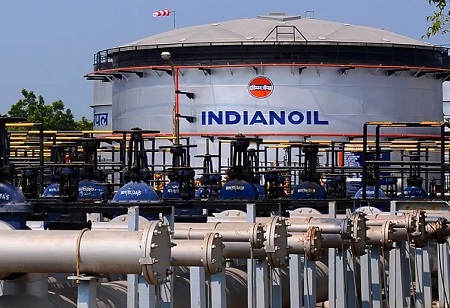Indian Oil Corporation intends to establish a joint venture for the manufacturing of sustainable aviation fuel (SAF) with numerous domestic airlines and US-based LanzaJet Inc. At the state-run company's Panipat refinery in Haryana, the new partnership will install a plant to produce SAF with alcohol-to-jet technology for a cost of Rs 3,000 crore, they claimed.
The new company's proposed organisational structure, IOCL will own a 50% stake and LanzaJet Inc. a 25% stake. A number of airline corporations would be offered the remaining 25% of the ownership. "Domestic airline businesses have shown interest in participating in this project. Multiple airline businesses may be offered between 2 and 5% stakes, with IOCL reserving 25% for them, according to a senior industry official familiar of the development. According to the official, the airlines are being involved to ensure fuel offtake.
For the proposed factory, IOCL and LanzaJet will each invest Rs. 1,500 crore and Rs. 750 crore, respectively. Airlines that decide to participate in the new entity would invest the remaining funds. According to the industry insider, Tata Group, which runs Air India, Vistara, IndiGo, GoFirst, and Blue Dart, has so far been contacted about investing in the project. They might each spend between Rs 100 and Rs 150 crore for a minority interest in the business. SAF is a biofuel having characteristics akin to those of regular jet fuel but with less of a carbon footprint. The proposed plant will use technology to turn ethanol made
from corn, cellulosic biomass, or sugar into SAF. In the beginning, it would produce 85,000 metric tonnes of fuel annually. The biggest airline in the nation, IndiGo, said it is considering the suggestion. "Recently, the ministry conducted a discussion on this subject with the help of airlines and oil marketing corporations (OMCs). We are considering the request, according to an IndiGo representative.
Inquiries on the subject received no responses from LanzaJet or IOCL. In their conversations with OMC and the government, airline executives had suggested that using SAF should be promoted by government policy rather than requiring airlines to purchase equity stakes. According to a senior airline executive, "it will be counterproductive for an airline to make an equity investment in a non-core area as airlines primarily invest a lot to increase capacity or maintain liquidity." The use of SAF should be promoted by the government, and if investments are required, they should be made by the OMCs.
Airlines noted that the SAF's production costs are too expensive in a representation of the industry made to the government. The price of a ticket for a typical two-hour flight will rise by about Rs 180 if SAF is blended with conventional jet fuel at a rate of 5%, according to the statement. According to the CEO cited above, "At current production prices and rates, this doesn't look sustainable unless the government provides policy support." Aviation has been highlighted by the Indian government as one of the main industries that needs to reduce emissions, and it is encouraging airlines, airports, and ground handlers to take action in that direction.
People with knowledge of the development reported that the policy think tank Niti Aayog has put up a number of initiatives to boost domestic production of sustainable aviation fuel. The Aayog has proposed a GST of 5% on SAF and stated that the government might eliminate costs like as passenger fees and user development fees (expensed by airports) for flights using SAF. ATF is significantly taxed in several states and is not yet covered by the GST. It is subject to state-level value-added tax (VAT) in addition to the central excise charge of 11%.
Airports are required to switch to electric-powered vehicles and equipment by the Ministry of Civil Aviation in order to cut emissions during ground handling operations. A ground-handling equipment guideline that will specify the minimum and maximum ages for equipment to be used at airports is currently being finalised by the ministry. India aims to minimise anticipated carbon emissions by one billion tonnes by 2030 and obtain 50% of its energy from renewable sources.
